The Queer Indigo Challenges Conventions with ‘Divine Defiance‘
What were you afraid of as a child? Were there monsters hiding under your bed? Were you worried about story hours with drag queens or rainbow flags in the public library? Or were the real demons in your family, school, or church? Were they connected to religious trauma? Barry Brandon (@thequeerindigo) once again created a project that has left me asking these questions, and more.
Related: Stunning New Portraits Capture Queer Beauty & Strength
Personal Revelations
When I think about what instilled the most terror during my childhood, my mind turns to the Catholic Church and a red book. It was an illustrated version of the book of Revelations with a red hardcover and gold lettering on the front. The book was filled with images just horrifying enough for my young brain to obsess over. Despite my existential dread and countless nights imagining the inevitable fire and brimstone, there were no book bannings. There was no outrage and no one there to protect me from this terror.
And yet, here we are over two decades later and it’s queer people who are still defending our right to tell our stories. We are still in courtrooms defending our very existence. In many ways, the church has fostered a culture of fear around queerness and you can either try to ignore it or strap on a pair of heels and some fishnets and show them who you are.
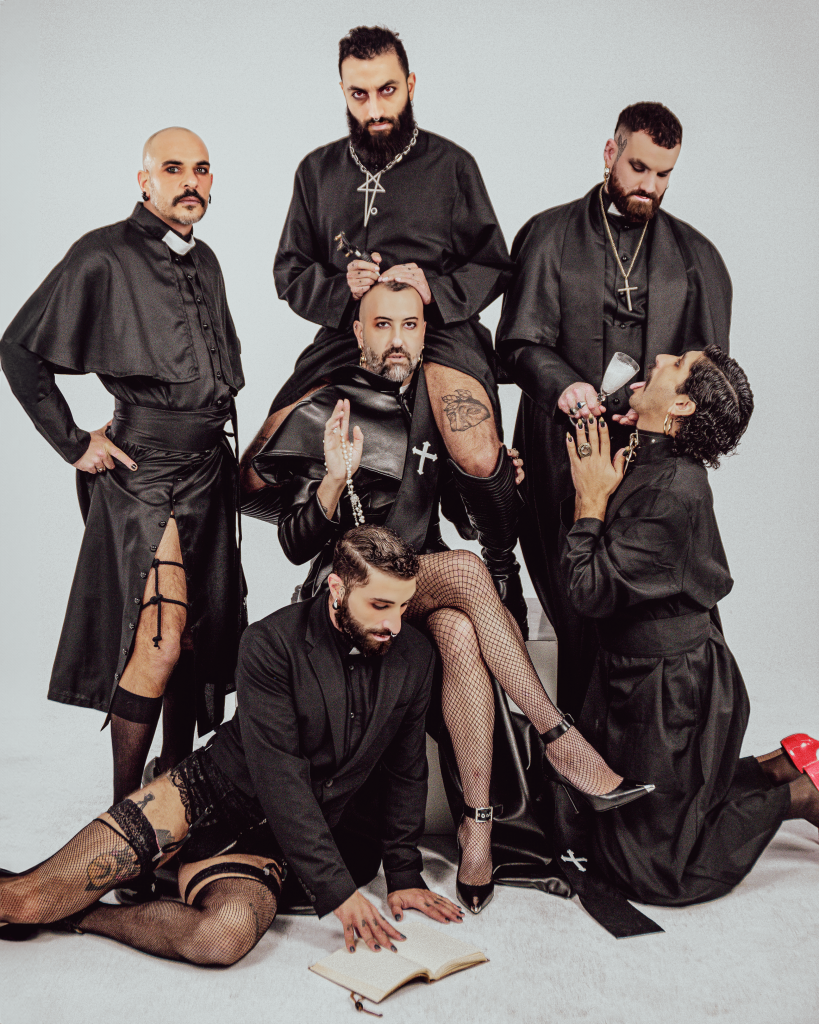
Introducing ‘Divine Defiance‘
That’s exactly what Barry Brandon, better known as @thequeerindigo, is doing. For the second year running, Brandon moves to redirect the scrutiny back upon the Catholic Church with a new art project called ‘Divine Defiance.’ Drawing inspiration from Rome’s infamous “Hot Priest Calendar”, the project showcases 12 queer men adorned in both Catholic and queer raiment. While the ‘Hot Priest Calendar’ is largely accepted by the mainstream, Brandon wonders why this sexualized heteronormative imagery isn’t held to the same level of scrutiny as queer religious symbolism.

In this way, the project is intentionally provocative and Brandon anticipates criticism, particularly given the timing of its launch. Between Palm Sunday and Easter Sunday, the Catholic Church is observing Holy Week. This is no coincidence. It is a direct challenge to question your preconceived ideas. We sat down with Brandon to talk a bit more about the project and its impact.
Gayety: Could you speak to whether or not this project is personal to you, and if so in what way?
I don’t know that it’s personal to me, per se. I’m Sicilian and I hold an Italian passport. I started going to Italy in 2012. I’ve been six times and I’ve spent weeks or months at a time when I go and I’ve done a walk in front of the Vatican with a group of people. I have to tell you that Italian LGBTQ people, most of them seem to feel very trapped in this world. And a lot of them don’t have the words to verbalize it because there’s an intersectional thing that’s happening without their awareness. The government is anti-LGBTQ people and culturally Italy is not as pro-LGBTQ because this religious institution has immersed itself in Italian culture.
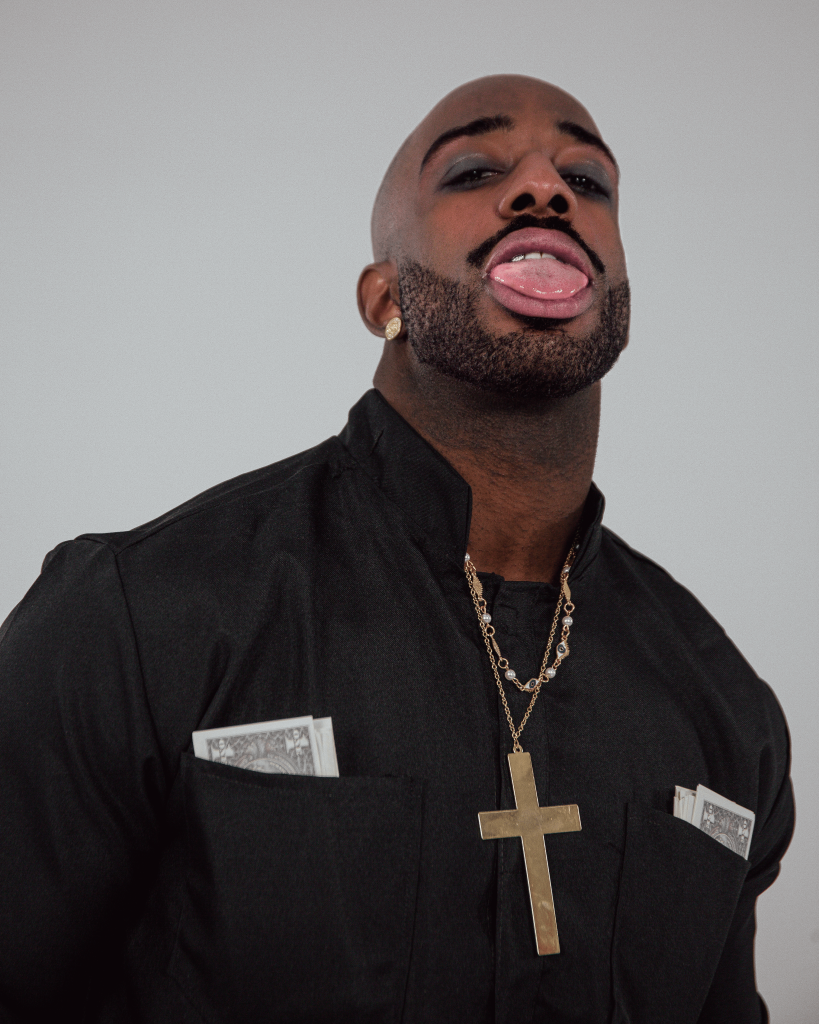
It’s like they’re living in, how I would describe it, almost like a thick air. It feels like the air, the oxygen, you need to sort of breathe a bit deeper to try to get oxygen as an LGBTQ person there. I don’t want to speak on behalf of everyone. Obviously, I’ve not met every LGBTQ Italian person, but I have met many. And in my conversations, it seems as though there’s a shared sentiment of this feeling of how it feels to be there.
Gayety: Some would say that this art is provocative. Do you think provocation is the best way to generate a discussion around this topic?
Brandon: I don’t know if I think it’s provocative, personally. I understand that there will be that perception and I believe that most people will say this is very provocative. And I would also say that I don’t find it harmful.
We’re here living our best lives, and no one’s hurting anyone. We have complete autonomy over ourselves. We are aware of what we’re doing. We’re doing it for a reason. There’s a purpose, there’s an intent. If that comes across as provocative and disruptive, but there’s a slight pathway to someone looking in the mirror, taking inventory of themselves, and thinking about it deeper and more comprehensively, then we’ve done our work.
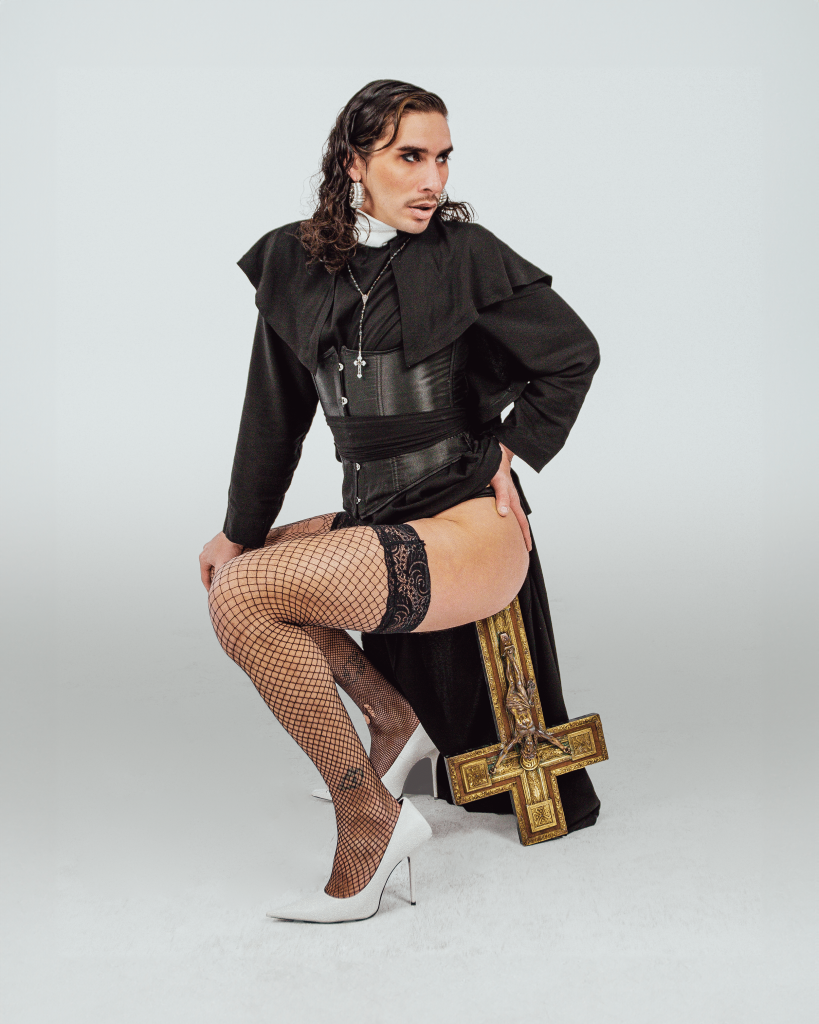
Gayety: I know you’re anticipating some backlash online about this project. What are you hoping will be the overall response?
Brandon: I don’t mind being the punching bag for showcasing what needs to be addressed. It needs to be discussed and talked about and I don’t mind being the person who receives the messages of hate because it doesn’t bother me. This kind of content is an important way to show that your perceived dominance over people is only your perception.
I hope that people see my intention, what they do with that, how they react, how they digest it, how they think about it, how they may heal from it, and how they engage with it. I honestly don’t have a clear thought or hope for it.
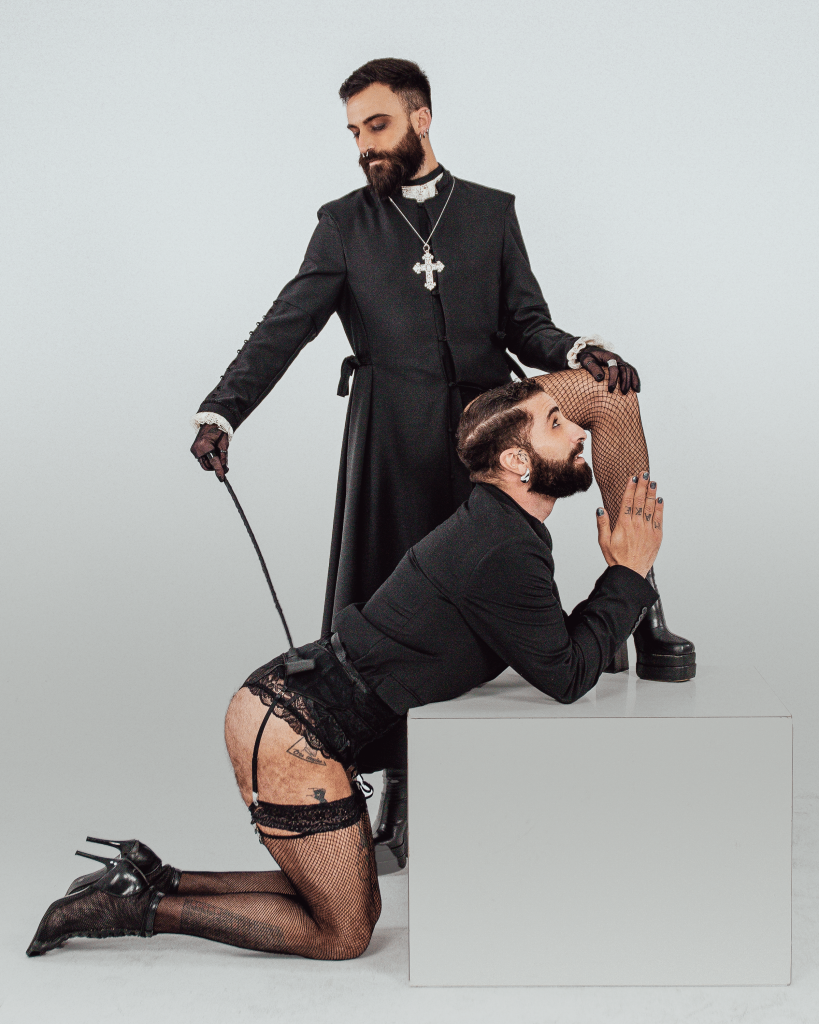
Gayety: What would you say to those who will point to and critique Satanic imagery in this project?
Brandon: For me, my true belief is that religion is ruining the world. So many things have happened in the name of religion; wars, murder, genocide, and rape. […] Then there’s the Satanic Church, it’s not something that I’m a part of, but everything I’ve ever read about it makes perfect sense. But for me, I fear that the power and dominance of [any institution] is just too strong. I can look at something and align with some of the values […] but I don’t really align with any institutions.
Gayety: It sounds to me a little bit like quite a lot of the critique that’s coming from you is a question of the misuse of authority, particularly coming from religious institutions.
Brandon: I think what a lot of religious institutions want is control and not thinking about that and not loving yourself, or loving a higher power more than yourself. How are you going to love someone else if you don’t love yourself? If institutions are teaching opposition to that, then we’re not really loving ourselves and choosing ourselves and living authentically.
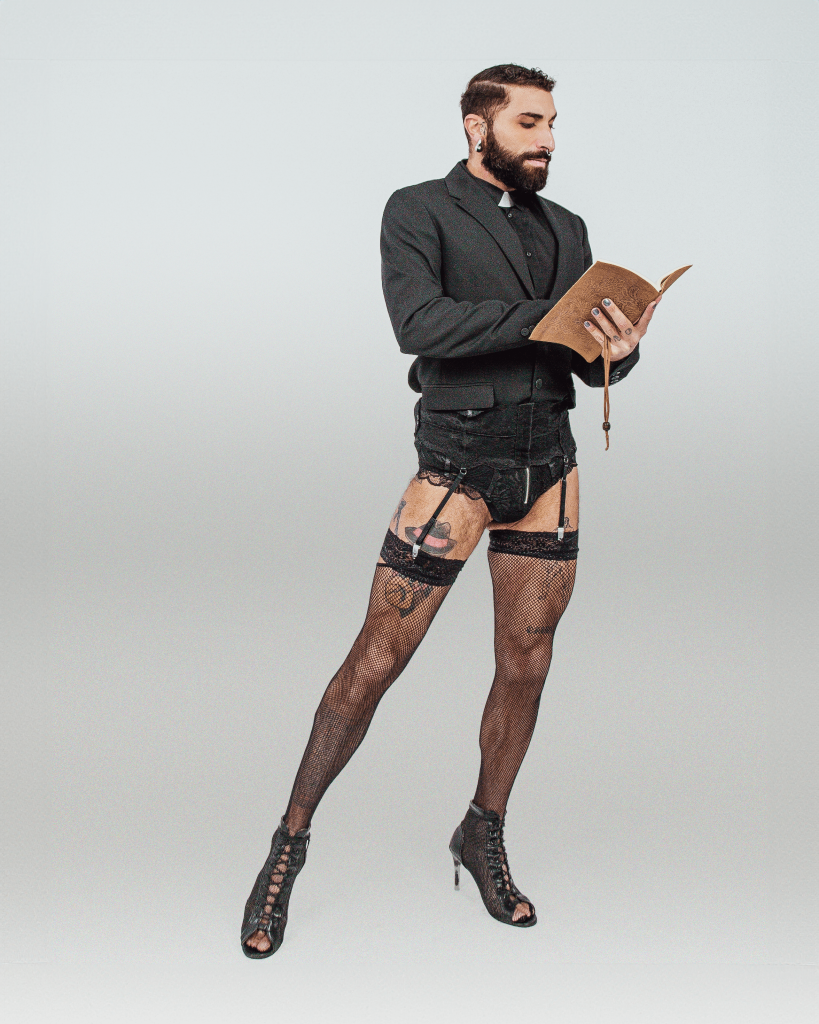
Acceptance and Queer Identity
When I look at these images I can’t help but imagine the backlash. The endless hot takes and opinion pieces. In the end, it comes down to harm. I can’t imagine that these images will create the same kind of perpetual dread that religious imagery instilled in me as a child. The kind of imagery that enters your psyche and thickens the very air you breathe.
What are you afraid of now? Are there monsters hiding under your bed? Are you worried about provocative art and queer identity? Or are the real demons counting on that? Perhaps, like me, you have religious demons of your own. Keep scrolling for more images from ‘Divine Defiance.’


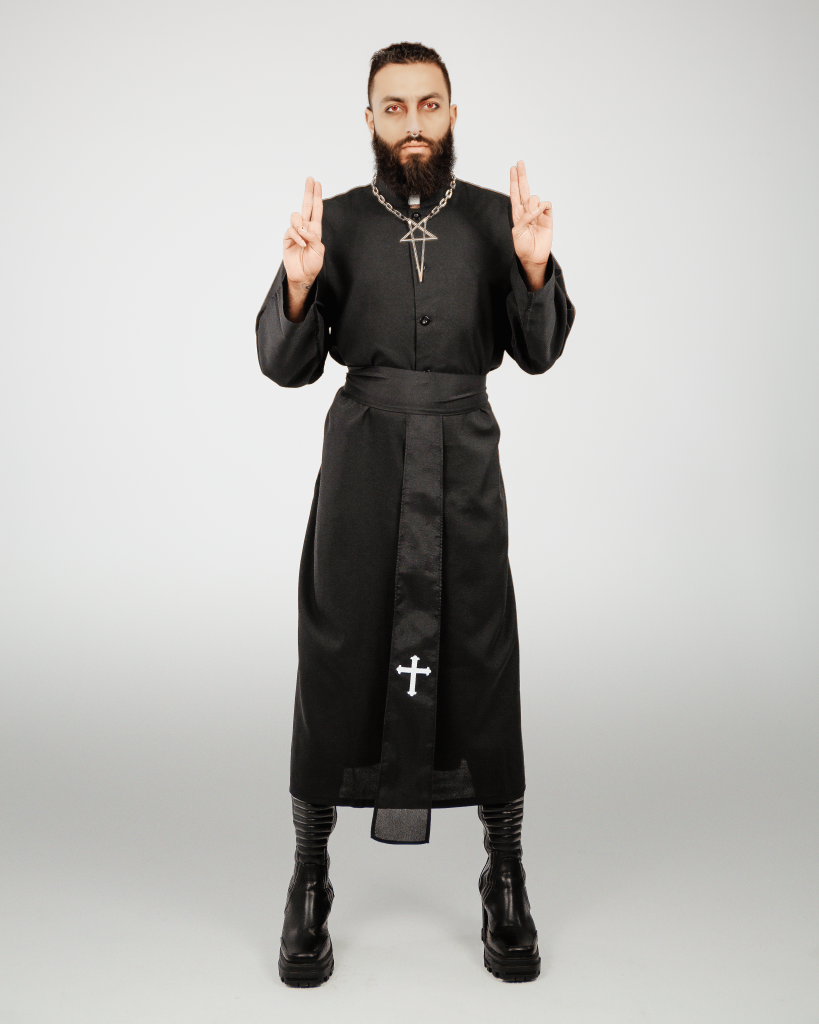
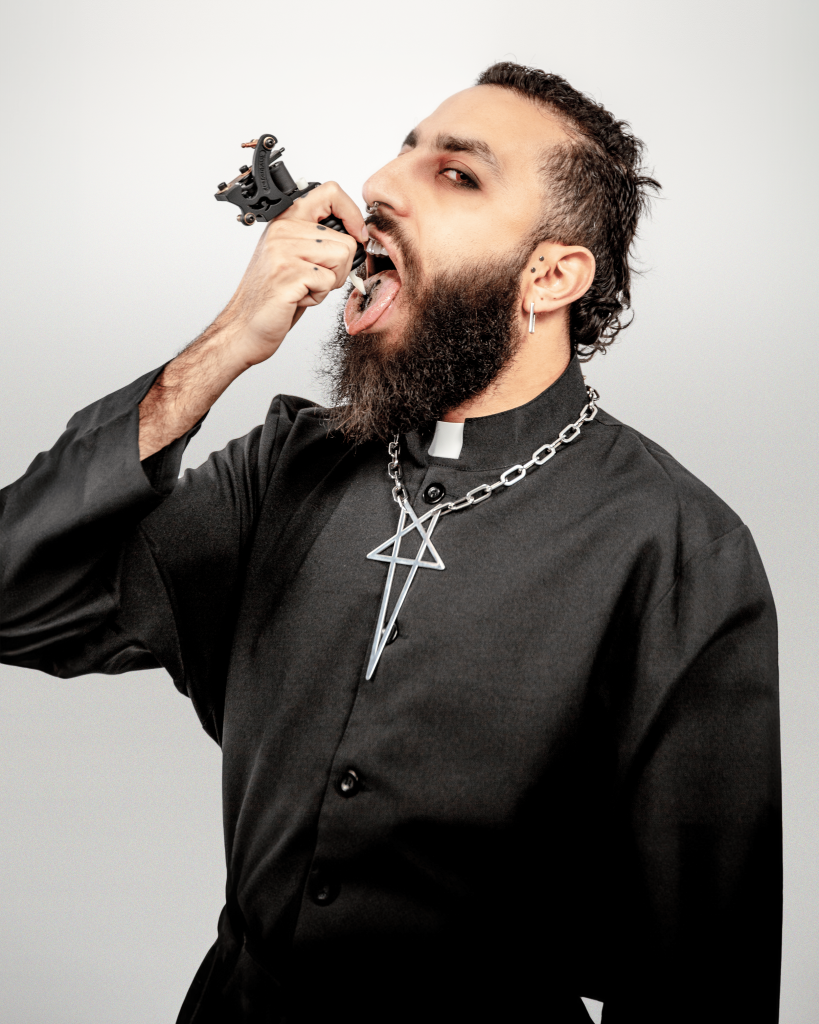

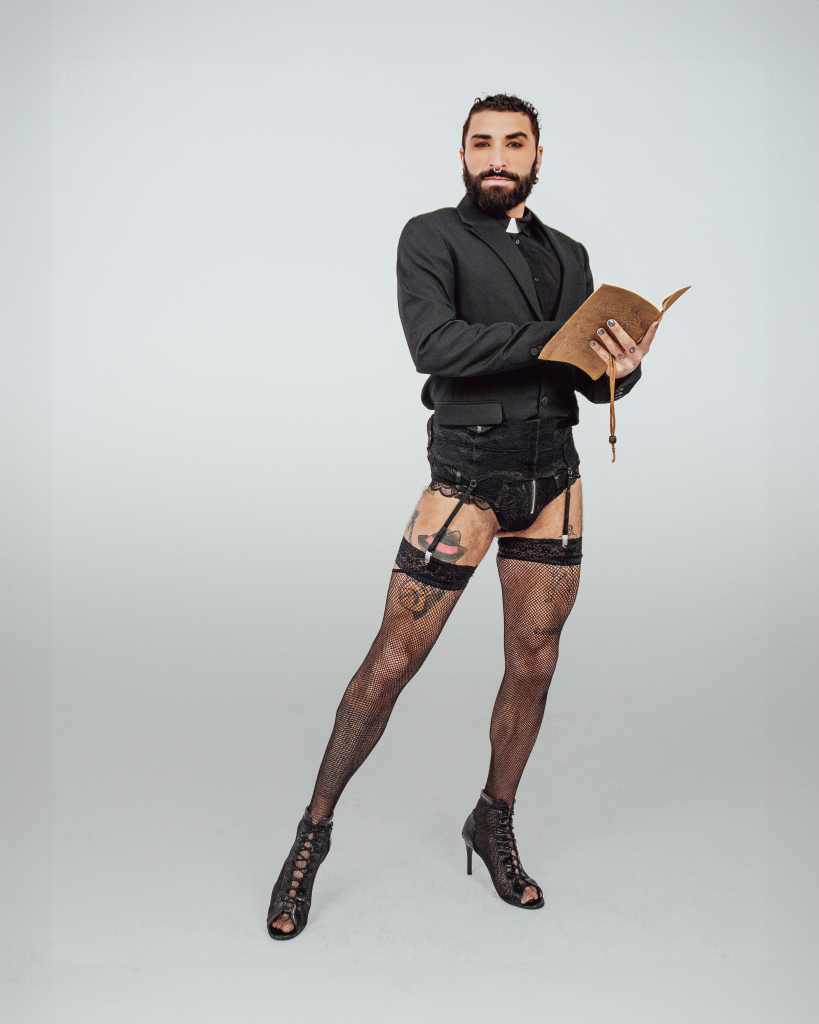
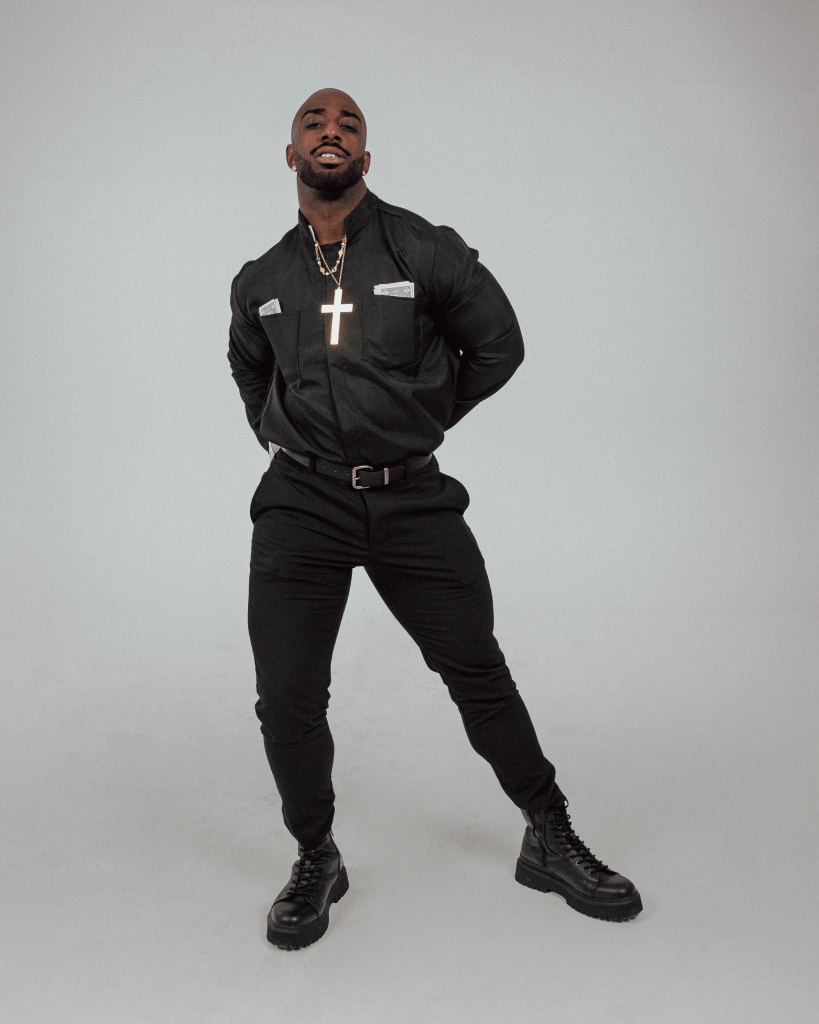
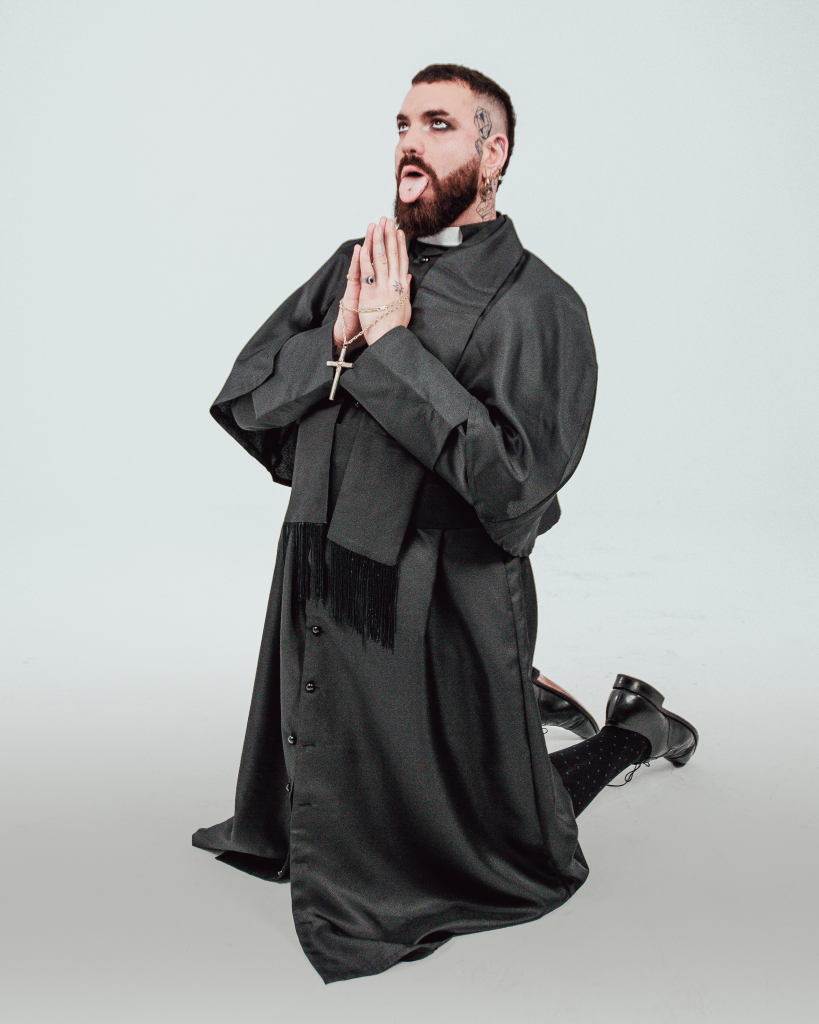
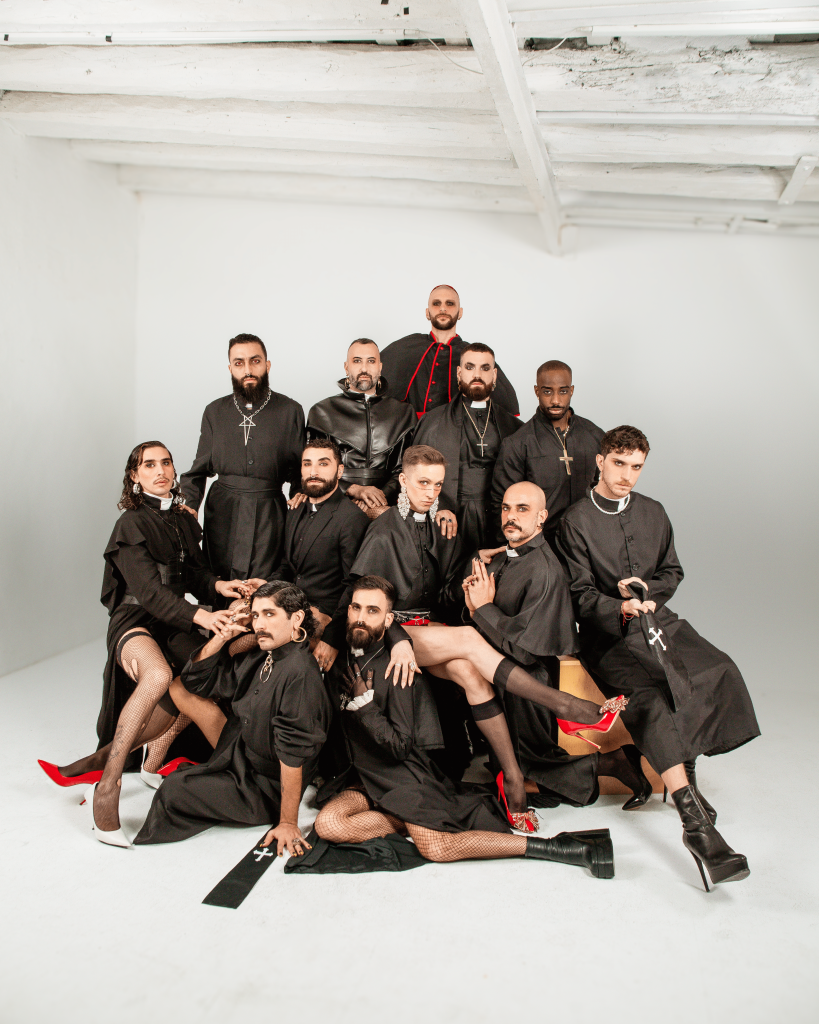
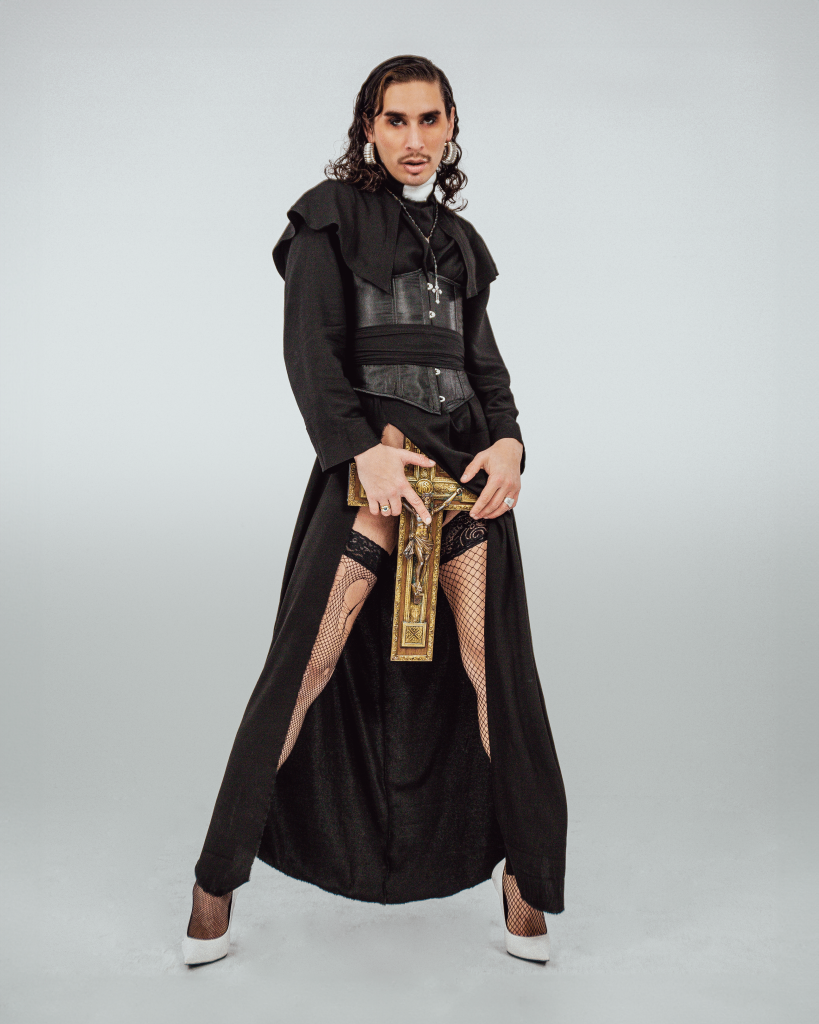
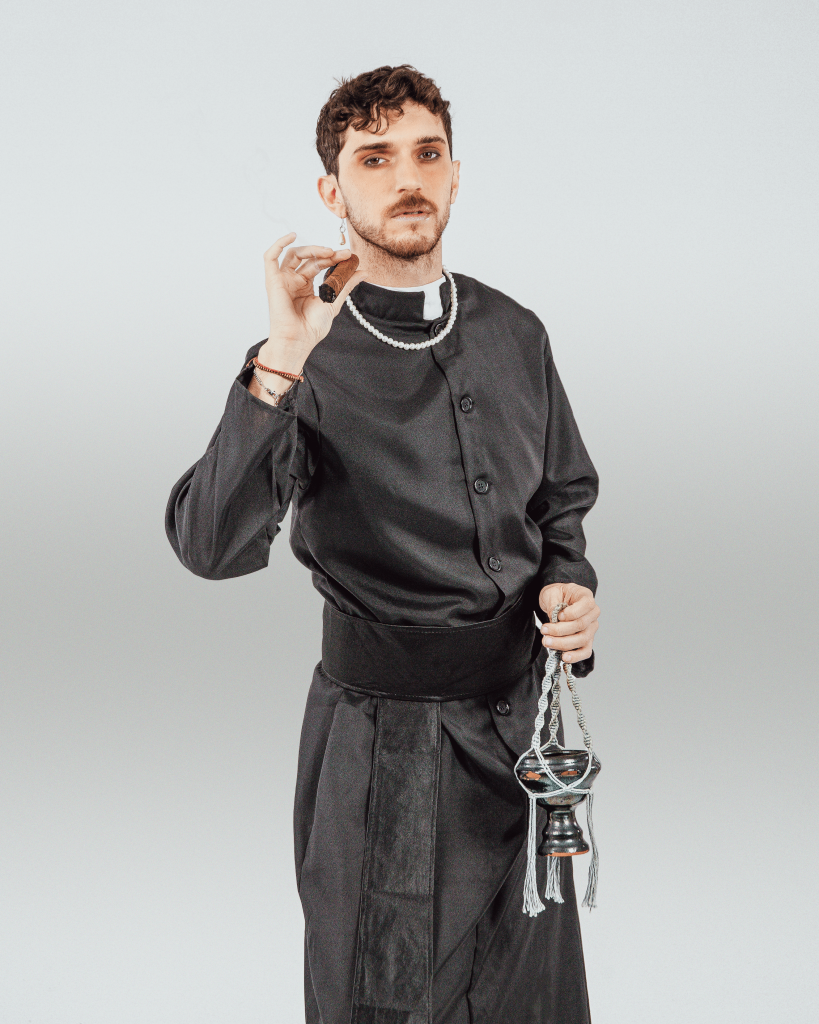
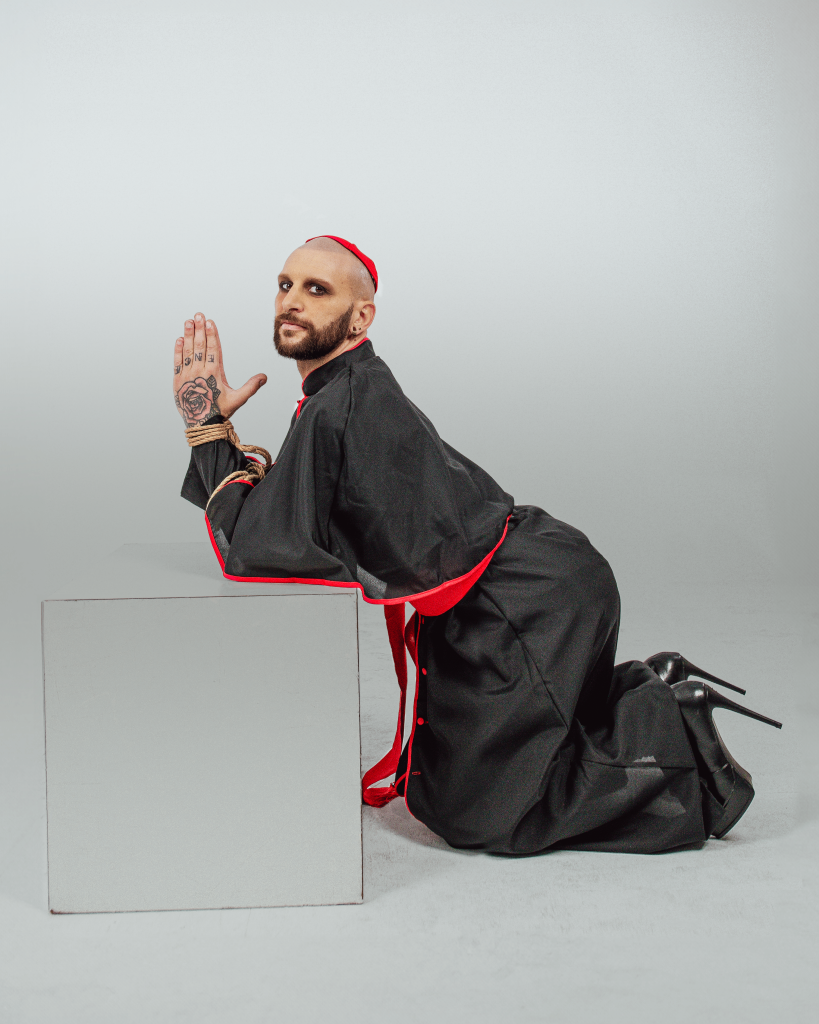
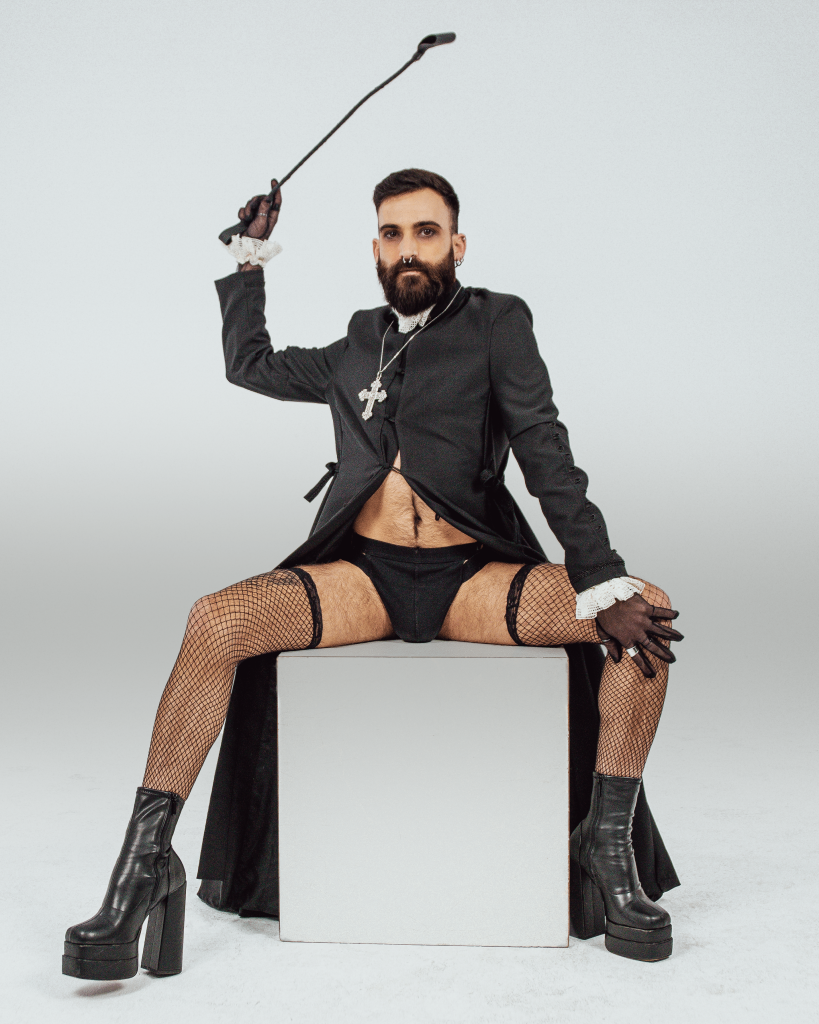


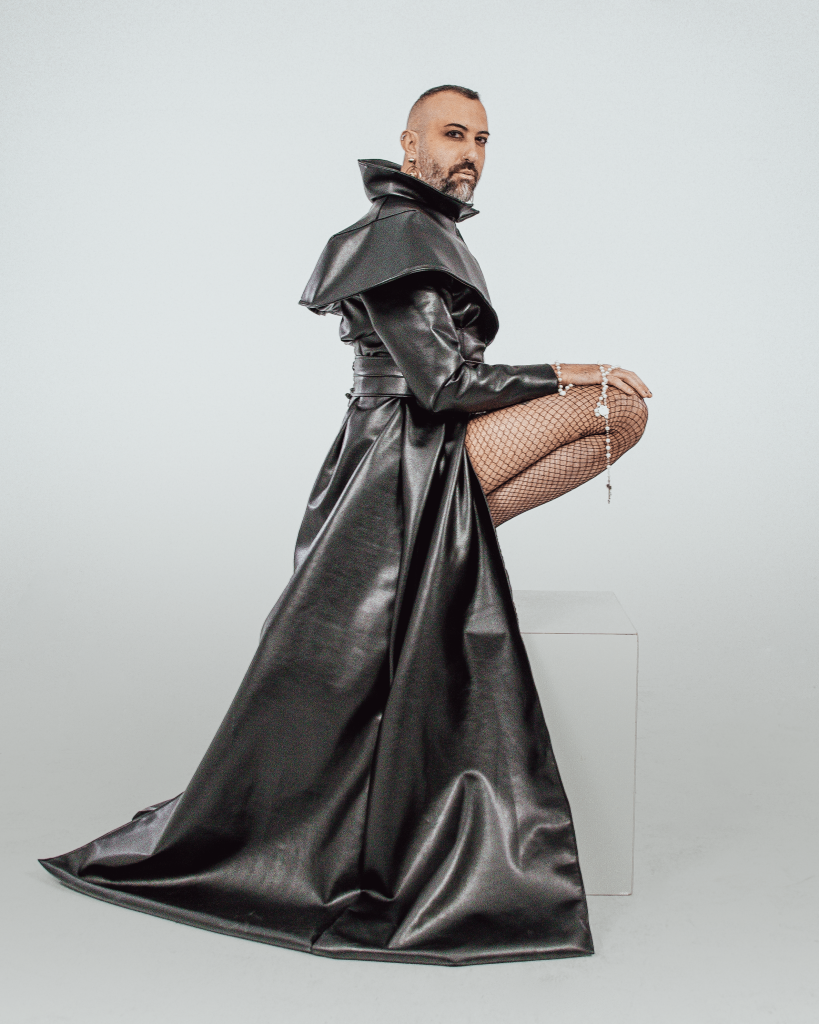
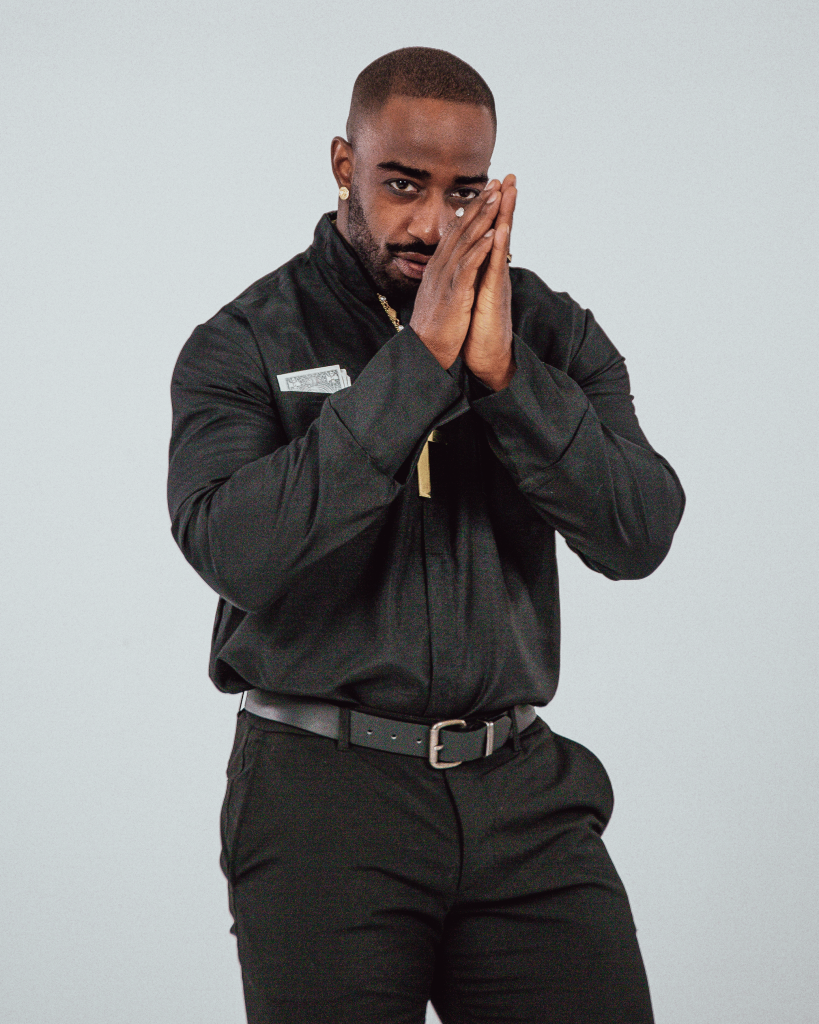
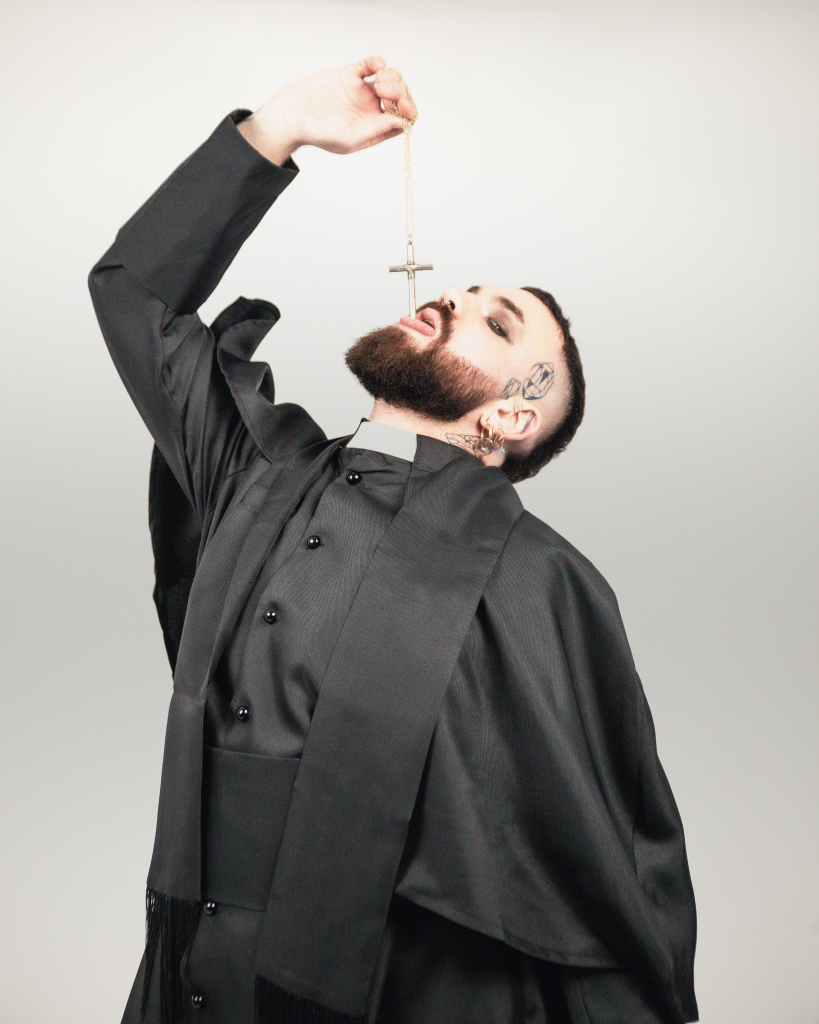
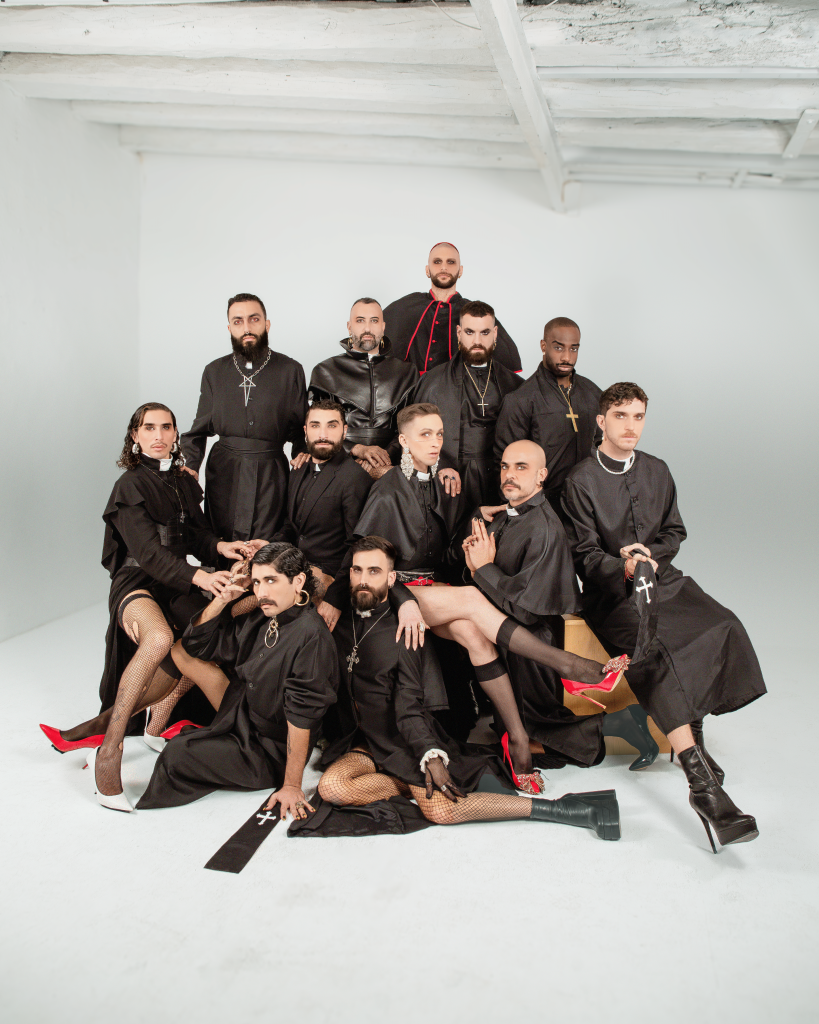

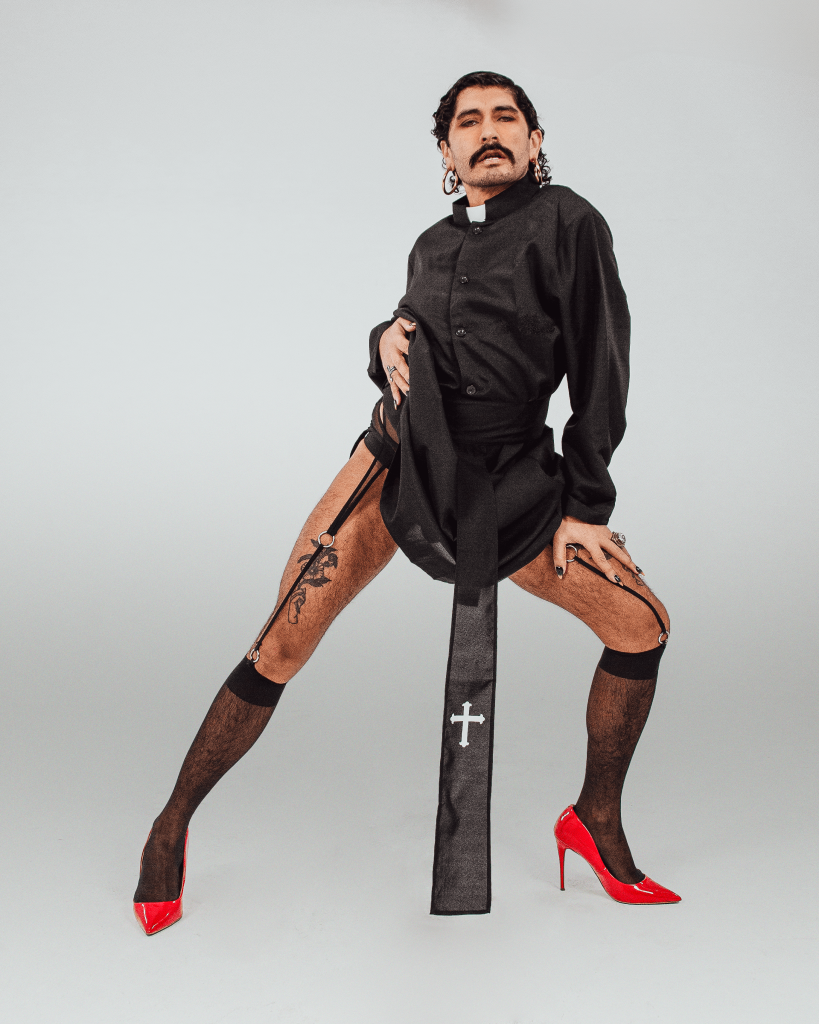
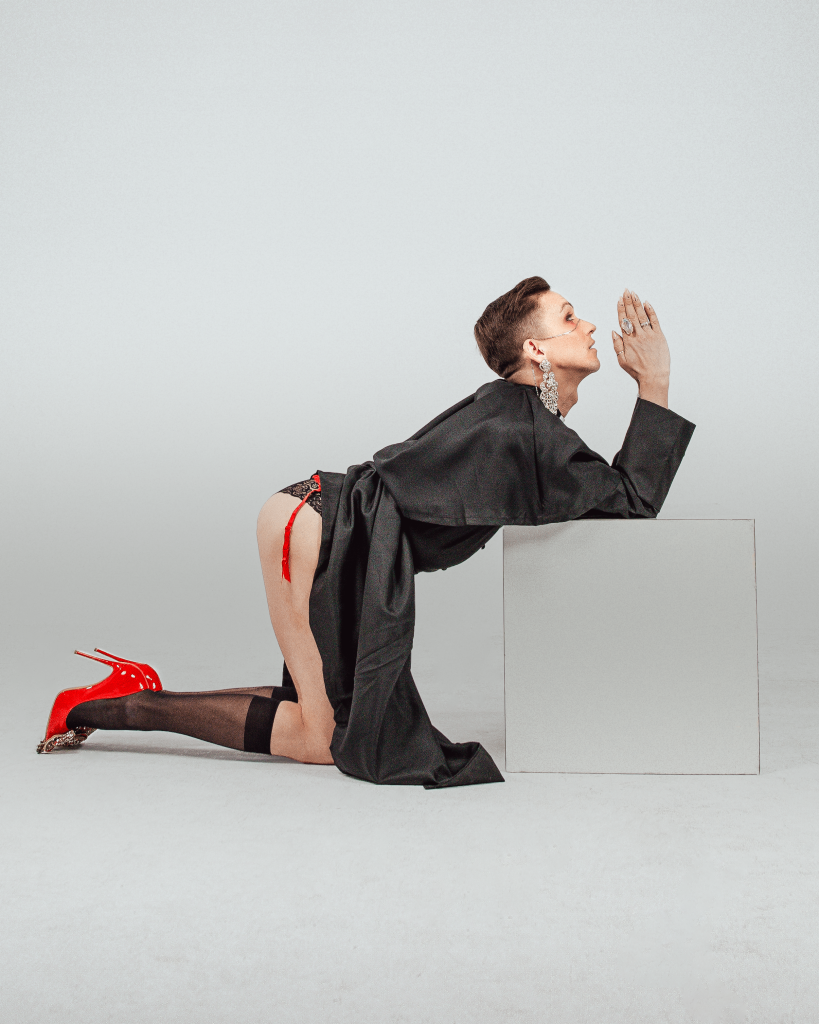
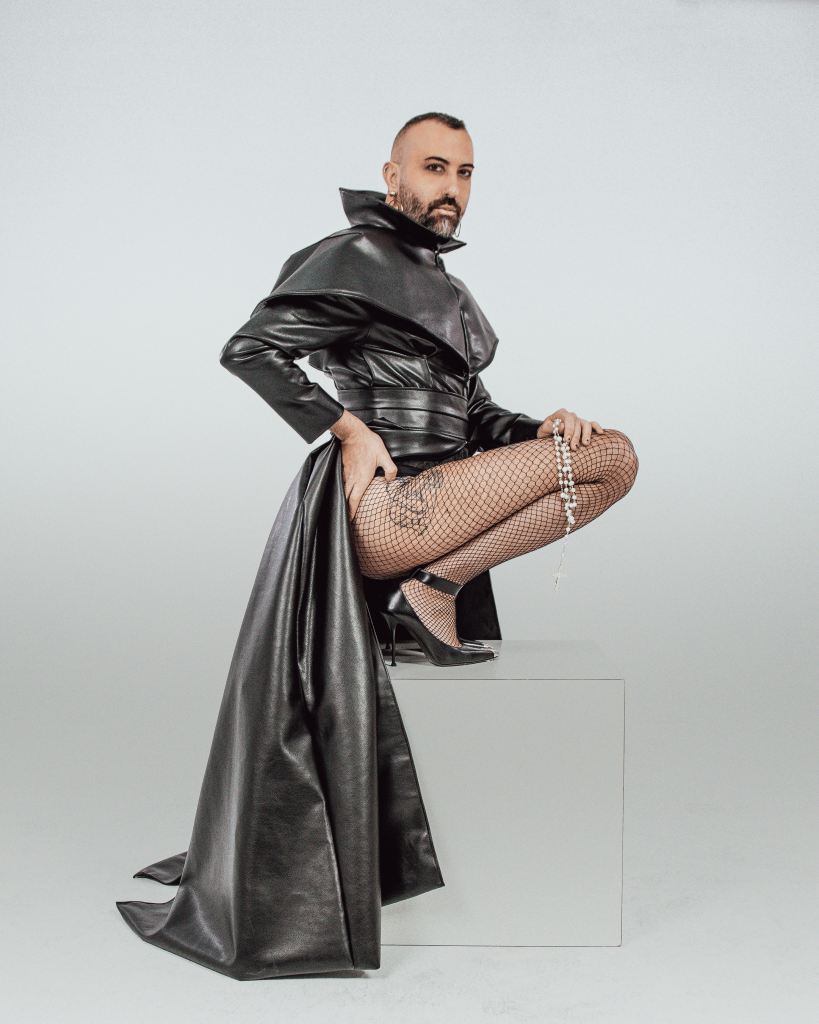
Go in Peace
If you haven’t yet, please take a moment to follow the incredibly talented folks who worked on this project. Check out Barry Brandon’s website and follow them on Instagram, TikTok, YouTube, Twitter, and Facebook. Read on for a list of the creatives behind the camera and show them your support.
Divine Defiant Priests: Arash, Ash, Barry Brandon, Calo, Chris, Giacomo, Lorenzo, Max, Miguel, Rodri, Tom, and Tye.
Creative Direction: Barry Brandon
Visuals and Photos: Juan Hands
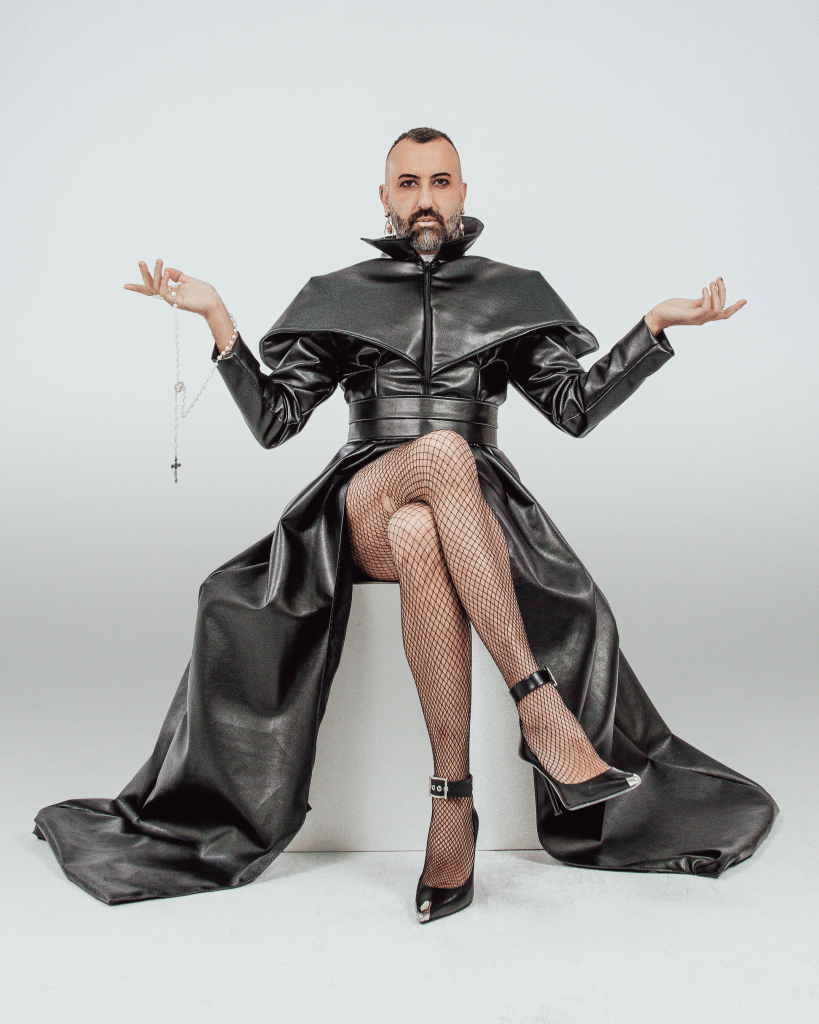
For more information about “Divine Defiance” and to support this critical conversation, visit www.thequeerindigo.com and follow @thequeerindigo on Instagram.

